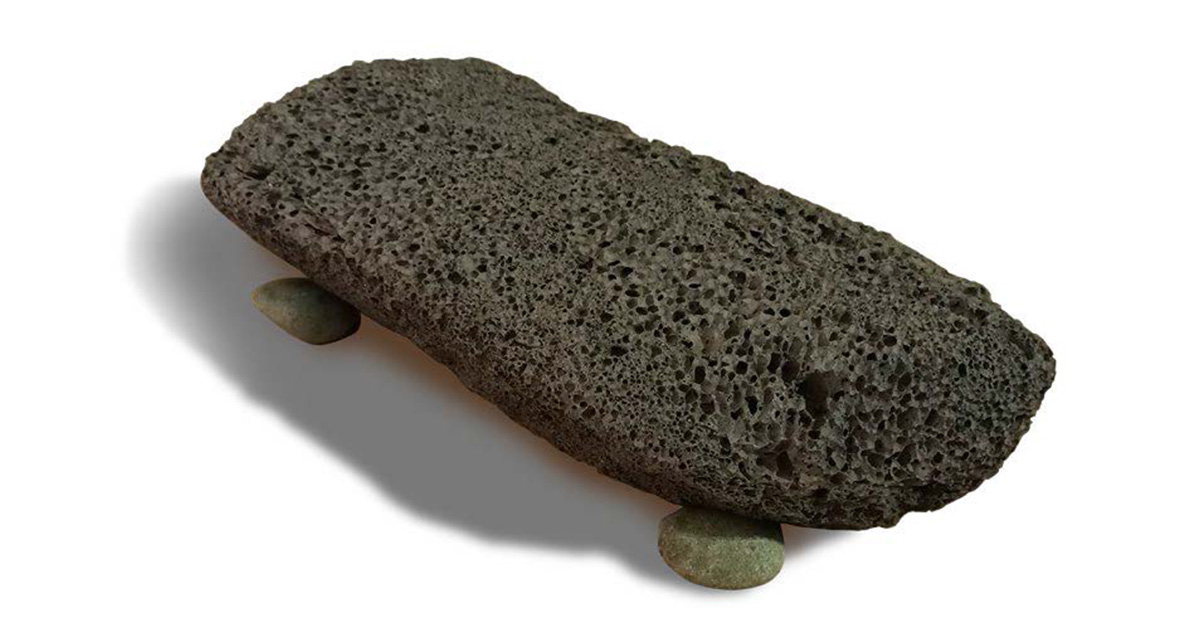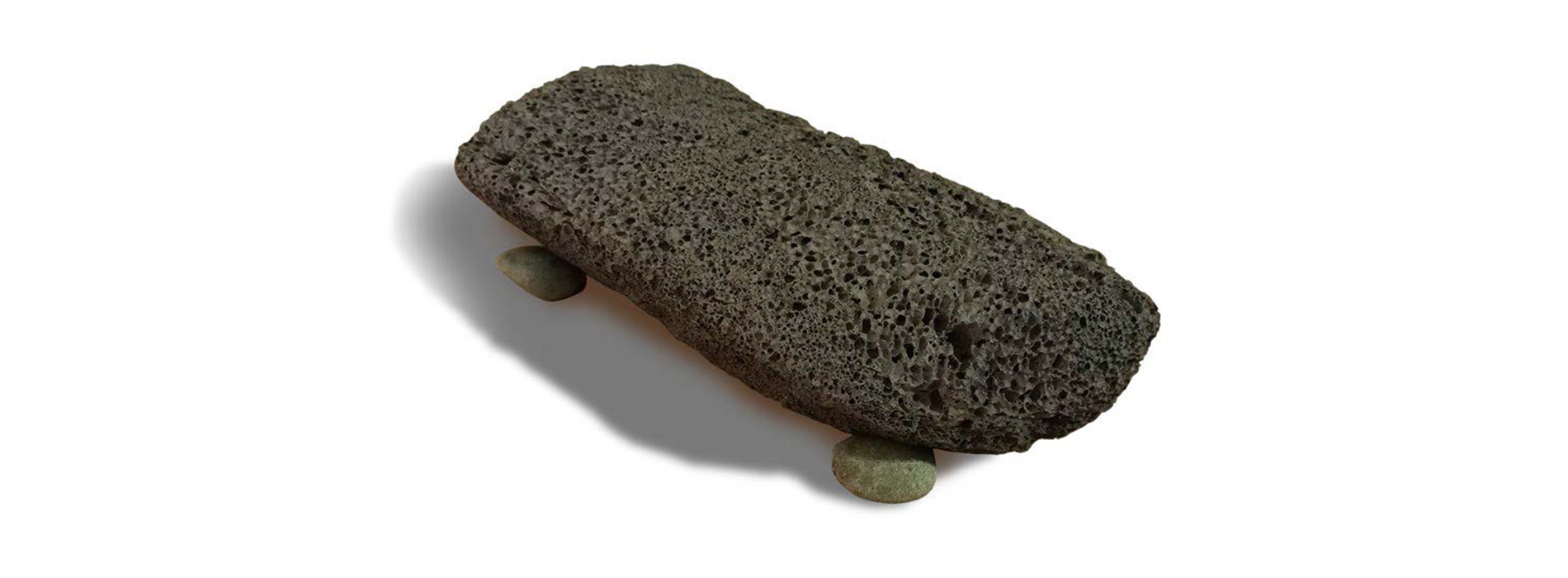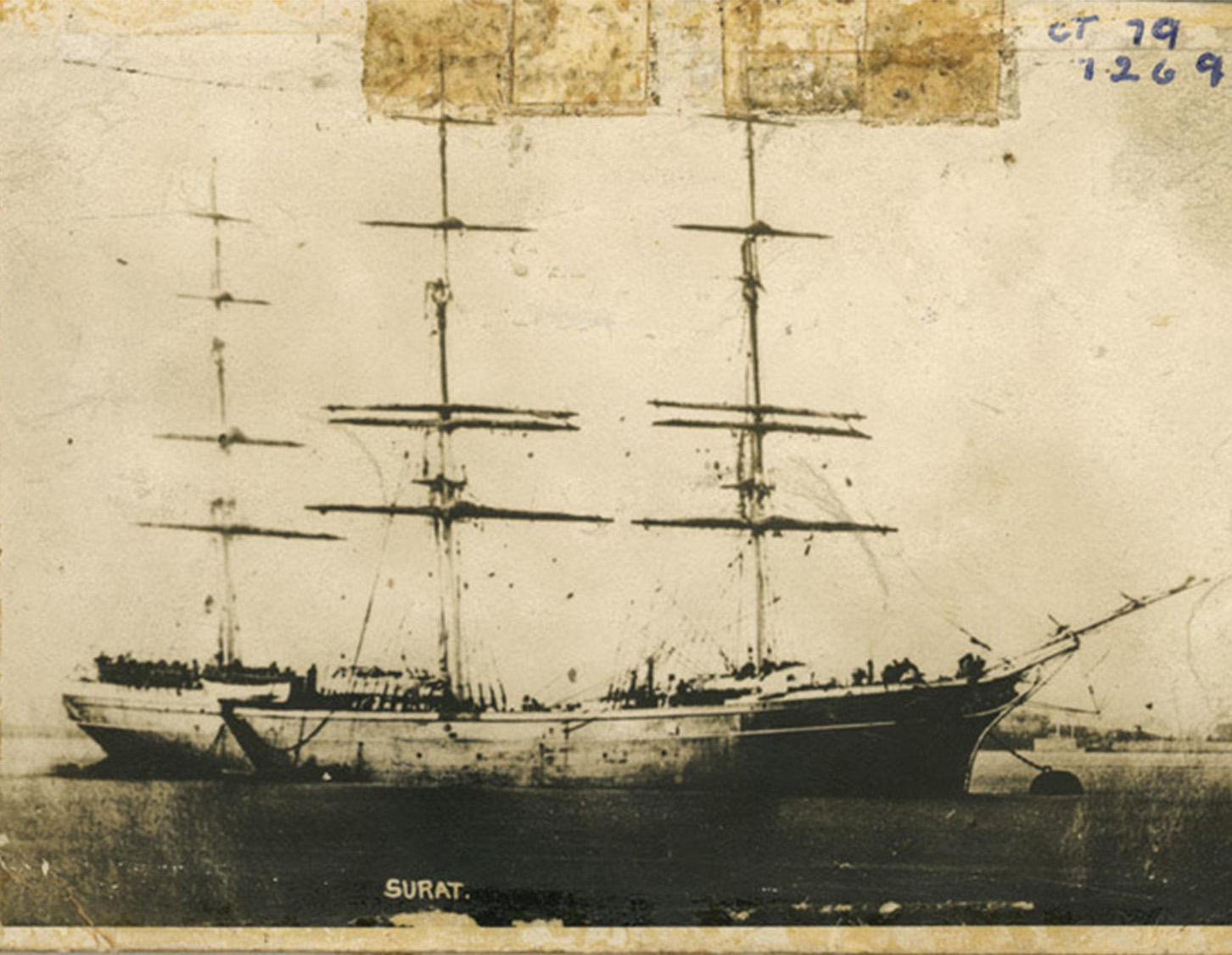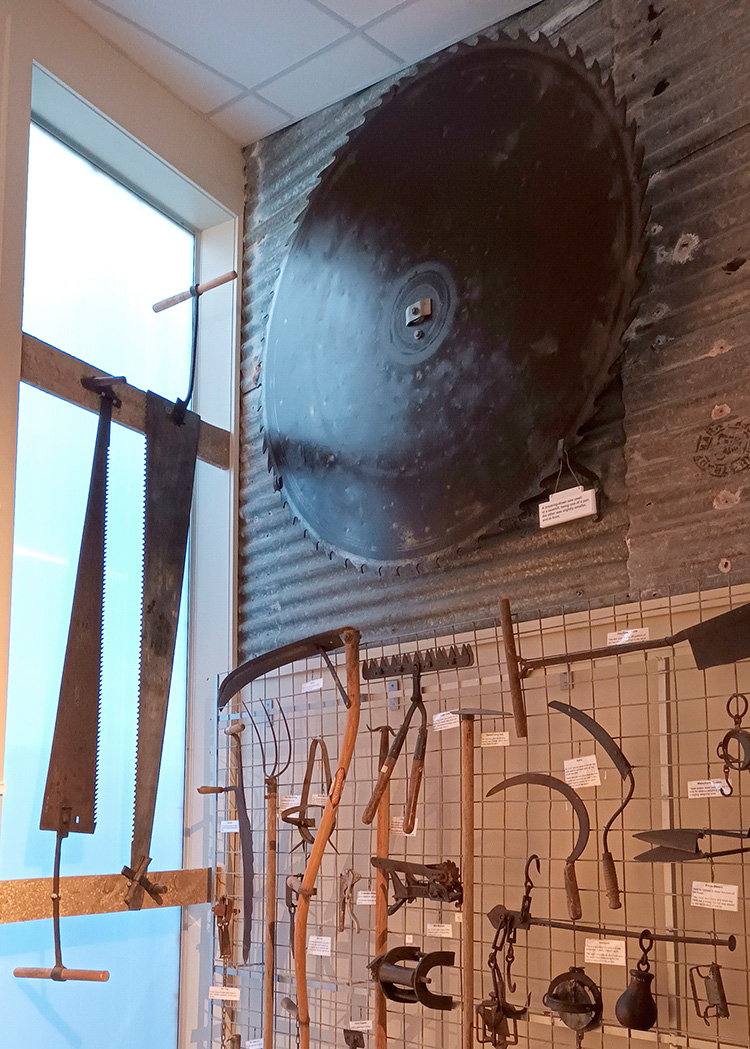
Culture Etc.

Above: This highly porous scoria block was excavated at Tautuku peninsula, and is likely from Mehetia, a young volcanic island in Tahiti. Photo: Mike McPhee.
Owaka Museum
This museum in the wild and windy Catlins will enrich a visit to the region – and is a handy place to stay dry during a storm.
By Tulia Thompson
It was New Year’s Eve in 1873 and Captain Edmund Johnson was sailing the Surat to Port Chalmers. The 1000-ton iron vessel had about 280 English immigrants on board, ready to begin their new lives. Land lay just ahead at the end of the long journey and Johnston decided he wanted to celebrate.
The Surat was meant to reach its destination the next morning. It wasn’t a dark night. Johnston opened a bottle of whisky in the saloon below with three married female passengers and took a long drink. The vessel hit a rock. There was plenty of whisky on board, but not, apparently, a proper set of New Zealand coastal charts.
Johnson had become what we might now call “messy drunk”. After the Surat found itself in trouble a coastal steamer, the Wanganui, came into view — but anyone who tried to signal for help was quickly stopped in their tracks by Johnson, who threatened them with his pistol. “Whiskey wrecked the Surat”, read the report in the Daily Southern Cross two weeks later. The article explained that the four mates, the steward and the sailmaker were also three sheets to the wind.
Eventually, the captain admitted they were sinking, and deliberately ran the ship aground in the Catlins some 127 kilometres south of his initial destination — the beach would later be renamed Surat Bay.
The crew and passengers all survived, as do some remarkable artefacts from that journey, which are now housed at Owaka Museum in the Catlins. A pair of shiny brass Victorian candlesticks are among them — so old you cannot help but wonder how they have remained a pair.
The museum displays faint sepia-toned photographs of the Surat, including one with cursive handwriting noting down facts of the crash. It also owns a weathered oval centre-link from the anchor chain of the vessel, unclasped at one side. A gold-rimmed blue-and-white Royal Doulton tea cup and saucer somehow survived both the wreck and a lifetime of use in New Zealand afterwards.
The main function of Owaka Museum is to house and share the history of the Catlins, a breathtaking stretch of coast between Balclutha and Invercargill defined by windswept beaches, the famous “nuggets” at Kaka Point, dense green bush and roaring waterfalls.
But with all this dramatic scenery, surely visitors to the region are more likely to be seeking out wild places and the company of yellow-eyed penguins or sea lions than the inside of a museum?
Mike McPhee, manager of Owaka Museum, says learning a bit of the history will enhance your trip. “If you’re here to see the wildlife and the wild scenery, it really pays to pop in and get a bit of background knowledge,” he says. “What you’re seeing comes to life a lot more if you know a little bit.”
Besides, the museum is a good destination when the weather turns wild, which it often does in the stormy Catlins.
Owaka village has a population of 300 (down from 500 at its peak in the prosperous saw-milling era of the 1920s) and is the biggest town in the Catlins, which has a total population of about 1000. An Owaka local, McPhee has been museum manager for three years and on the museum committee since 2002.
Around 5000 visitors a year visit the museum, a quarter of the total visitors to the community hub. Even after Covid, the foot traffic remains steady.
In pride of place in the museum is a scoria block purportedly brought from Tahiti by the first Pacific voyagers to arrive in Aotearoa nearly 900 years ago.
The ship’s captain opened a bottle of whisky in the saloon below with three married female passengers and took a long drink. The vessel hit a rock.

The shipwreck of the Surat meant Captain Johnson was sentenced to two-months hard labour, and lost his captain’s license. Photo: Collection of Owaka Museum.
The grey stone, shaped out of volcanic scoria, was found in 1963 in the bottom layer of an archaeological dig at a moahunter site — but its provenance is the subject of some controversy. Scientific analysis of the block’s composition led by geologist Ross Ramsay appears to have confirmed its Pacific origins and age, however archaeologist Atholl Anderson (Ngāi Tahu), a member of Te Pae Kōrako, the Ngāi Tahu Archive Advisory, is currently drafting a response to the research which offers an alternative theory. Watch this space.
In any case, the stone was bequeathed by local archaeologist Leslie Lockerbie when he died in 1996. Lockerbie had lived in the region as a child, collecting shells and rocks from the local beaches — the museum’s Lockerbie collection is huge, including more than 2400 stone objects.
Also hanging on the museum’s wall is a shiny-black circular saw blade from one of the 125 or so mills set up in the region from the mid-1800s to the 1920s. But why would anyone want timber from the Catlins during a time when there were no railways and the route by sea so treacherous?
In the 1860s, Dunedin was booming from the gold rush and had quickly depleted the forest surrounding Otago Harbour, McPhee says. The Catlins was the closest forested area which could be exploited. The biggest sawmill, staffed by 100 men, was co-owned by Dunedin businessman William Larnach, who built the famous Larnach Castle on the Otago Peninsula for his wife Eliza. The timber you see in Larnach Castle originated in the Catlins, McPhee says.
Faded photographs of groups of men posing outside the mills hint at tough lives marked by hard, physical labour, but when I mention this to McPhee he explains these men would have been motivated by the opportunity for a better life, enticed by the possibility of owning a block of land. For those who won a ballot in the local land allocation scheme, the land was available on a reasonable repayment schedule.
It was a way to make a life for oneself and one’s family, in a small coastal settlement buffeted by wind and rain.

The provenance of this saw blade is unknown. Timber milled in the Catlins was predominantly rimu. Photo: Mike McPhee.
Tulia Thompson is a The Next Page intern, made possible through funding from NZ On Air’s Public Interest Journalism.

This story appeared in the August 2022 issue of North & South.
